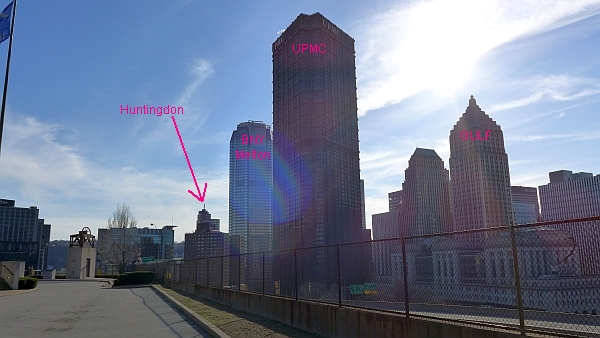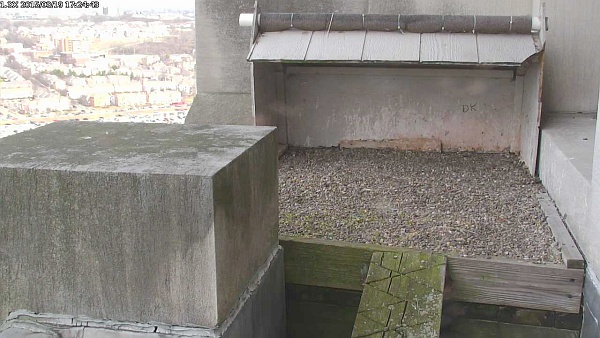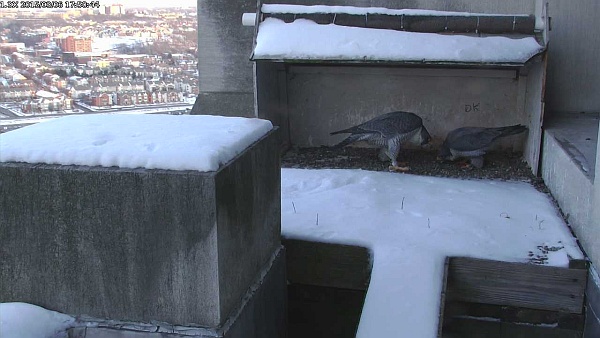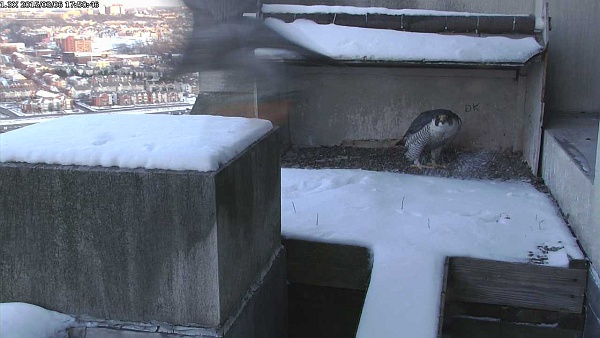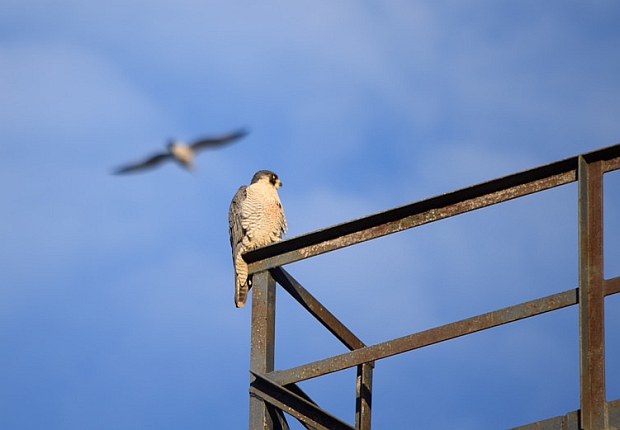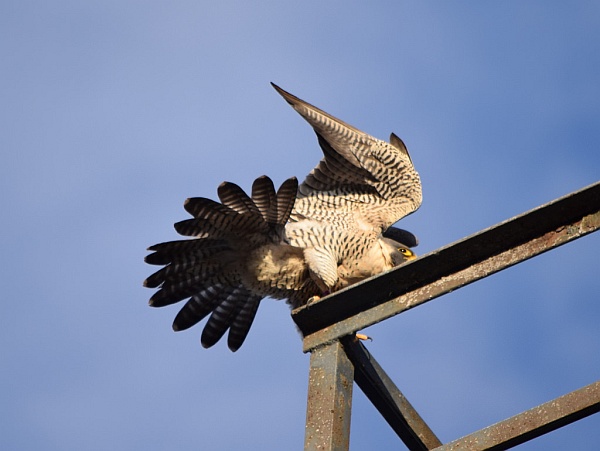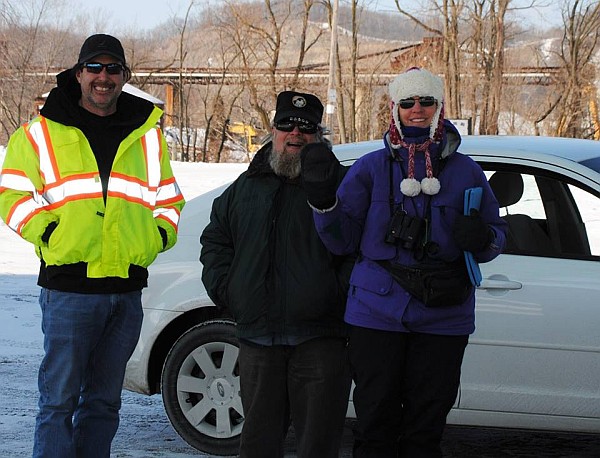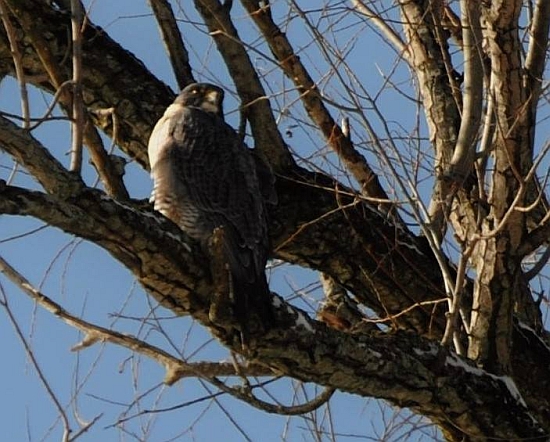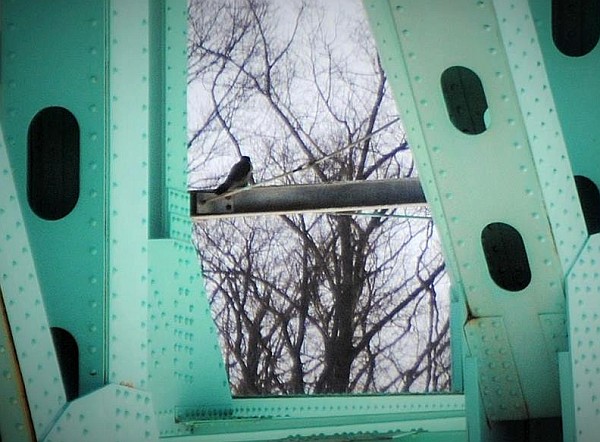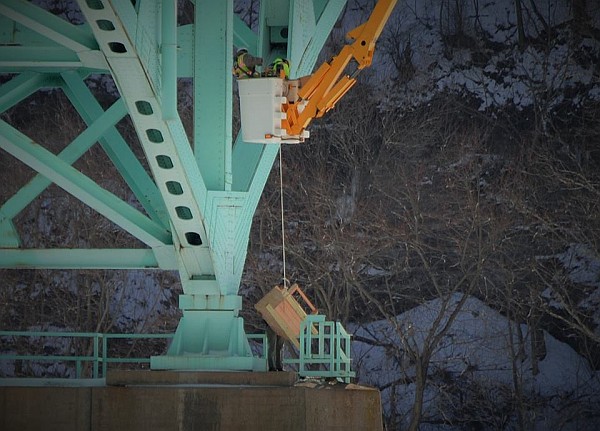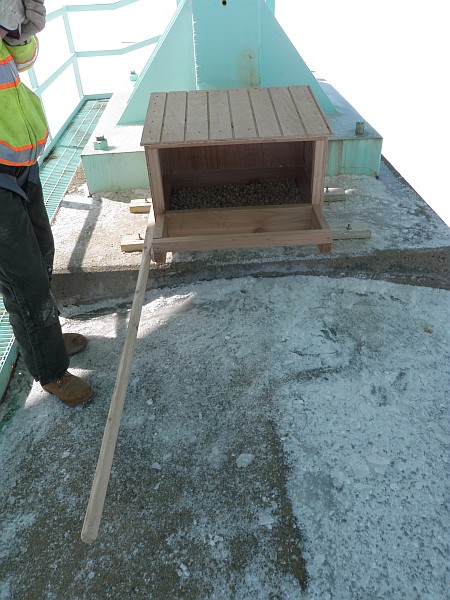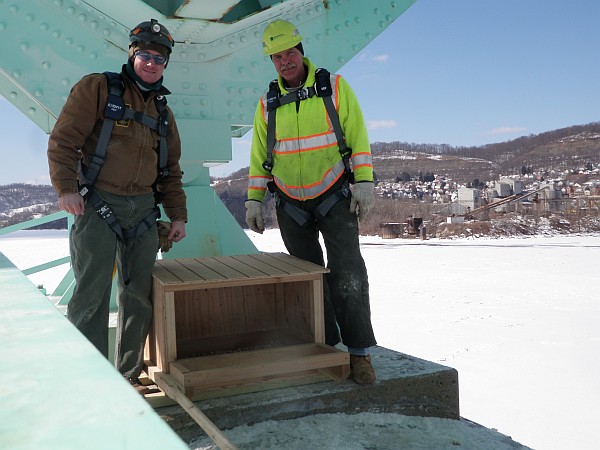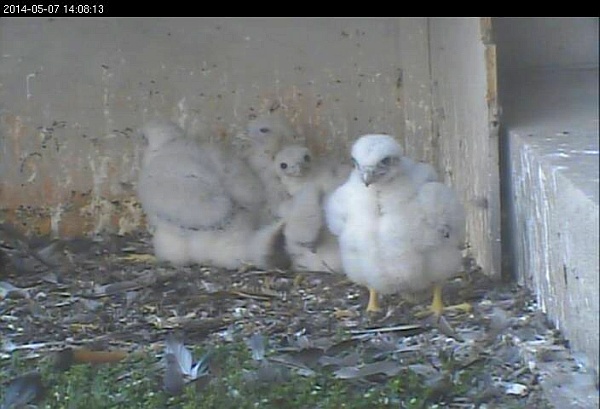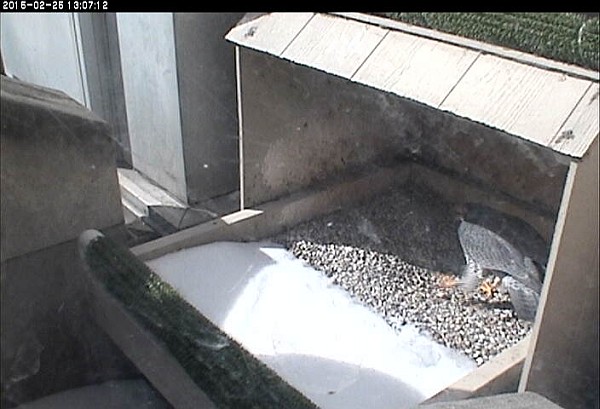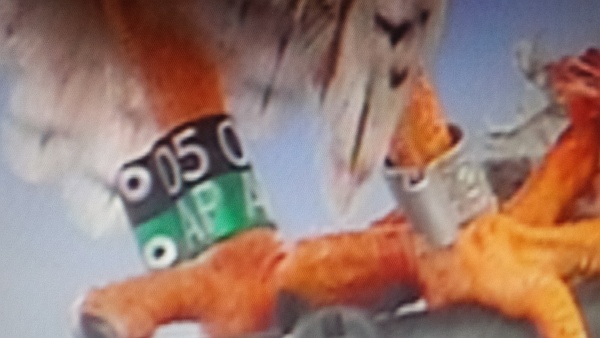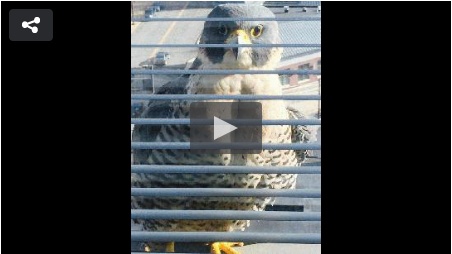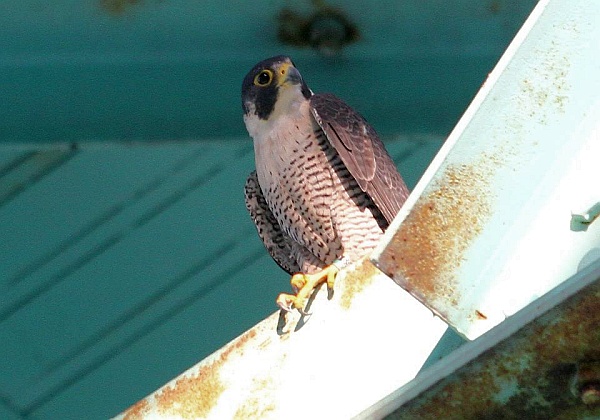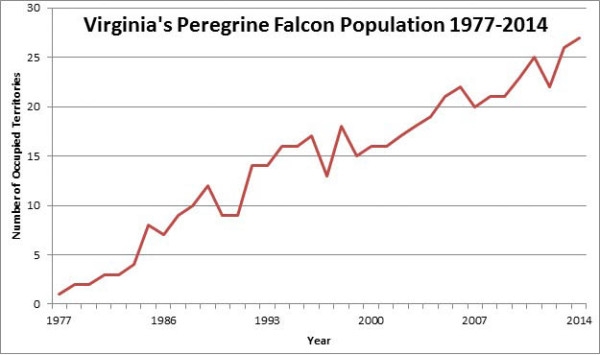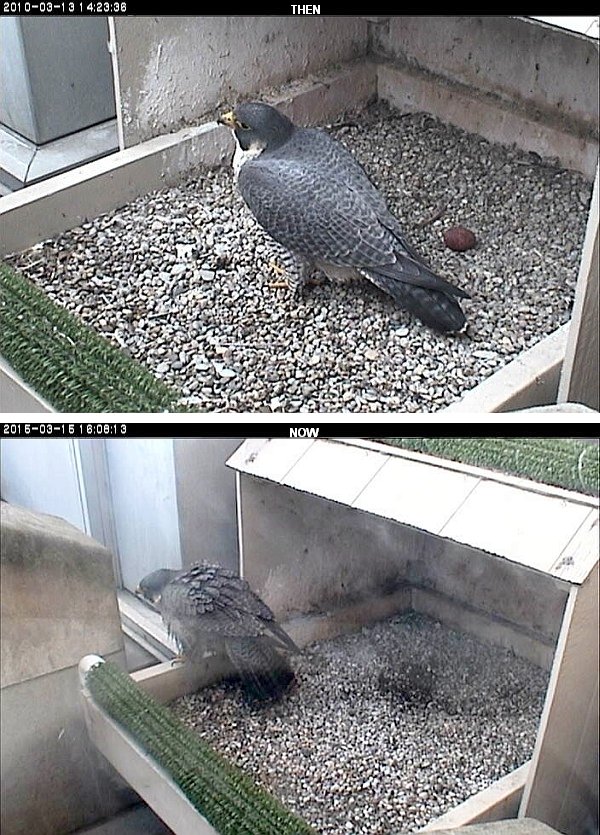
Many of you are looking forward to Dorothy having eggs and chicks this spring at the Cathedral of Learning. Others, knowing her age, have asked about her status. Today I’ll explain her condition and why you should not be surprised when she doesn’t have viable eggs this year.
Dorothy is 16 years old, elderly for a wild peregrine. Her fertility dropped to a single fledgling in 2013 and collapsed in 2014 after she became egg bound. In the top photo she was sleek and alert in her fertile years (photo from 2010). In the second photo, she is rumpled and slow moving now. Consistently rumpled feathers are an indication of ill health in birds.
I have watched Dorothy since 2001 when she was only two years old. For more than a decade she was full of vitality, totally in control. She only began to hint at her age in 2013. This year her decline is pronounced. There are differences in her behavior that tell me she is past her prime.
| THEN: 2001 to 2013 | NOW: 2014 and 2015 |
| Many courtship flights including aerial prey exchange in January, February, March | No courtship flights in 2015. No aerial prey exchange since 2013. |
| Perching and mating(!) on the lightning rod on top of the Cathedral of Learning | Has not been on the lightning rod. Has not been seen mating this spring. |
| Laid down only to incubate. (Peregrines roost and sleep in a standing position) | Lies down to sleep in nest though there are no eggs |
| Agile at all times | Opens wings to steady herself while walking on nest rail. Is slow moving |
| Always perched above the 27th floor. Rarely perched on A/C units | Perches as low as 12th or 13th, often on A/C units. |
| Sleek feathers, alert stance | Rumpled rough feathers, hunches more often |
When I see her lying down in the nest without any eggs, I worry. This is an unnatural position for a peregrine falcon that isn’t incubating.
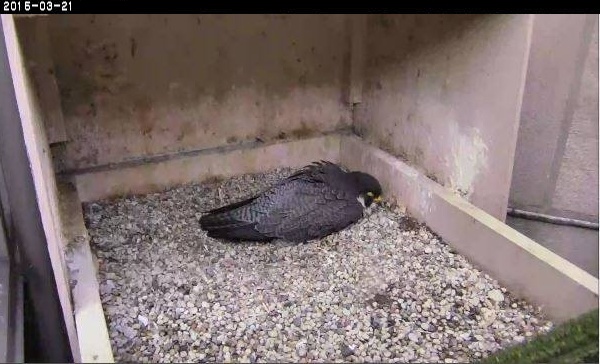
For now Dorothy is staying close to home. She is often seen on camera or perched at office windows, gazing in. These are endearing traits that make us love her more, but that does not change the fact that she is elderly.
Dorothy’s chances of producing healthy peregrine chicks this year is very slim.
(photos from the National Aviary falconcam at University of Pittsburgh)
